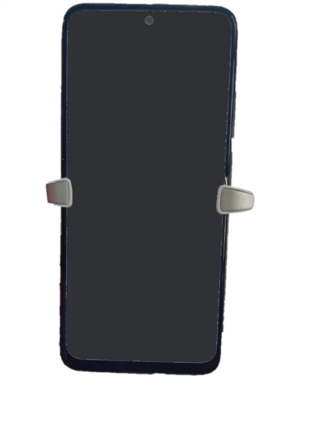Related Research Articles

Redmi is a subsidiary company owned by the Chinese electronics company Xiaomi. It was first announced in July 2013 as a budget smartphone line, and became a separate sub-brand of Xiaomi in 2019 with entry-level and mid-range devices, while Xiaomi itself produces upper-range and flagship Xiaomi phones. Redmi phones use Xiaomi's MIUI user interface on top of Android. Models are divided into the entry-level Redmi, the mid-range Redmi Note, and the high-end Redmi K. The unrelated Mi A Android One series is positioned in the same market segment as Redmi devices, despite being part of the upper-range Xiaomi Mi lineup. The most significant difference from other Xiaomi smartphones is that Redmi uses less expensive components, allowing lower prices while retaining good specifications. In August 2014, The Wall Street Journal reported that in the second quarter of the 2014 fiscal year, Xiaomi had a market share of 14% of the China smartphone market; Redmi sales were attributed as a contributing factor toward this ranking.
Android Go products were first showcased at MWC 2018 with six products: Nokia 1, ZTE Tempo Go, Alcatel 1X, General Mobile GM8 Go, Lava Z50, and Micromax Bharat Go. The Blu Vivo Go became the first Android Go device with Android Pie Go edition.
Xiaomi Redmi Note 6 Pro is a smartphone developed by Xiaomi Inc. The phone comes in three variants, the base model comes with 3GB RAM and 32GB of internal storage. A variant with 4GB RAM and 64 GB of internal storage is available for a price tag of ₹13,999 (US$180). The top-end model of the device packs 6GB RAM and 64GB of internal storage, which is expandable via a microSD card up to 256GB. The phone is a mid-range derivative of the flagship Xiaomi Mi 8, sharing similar design elements including its notch display and dual-camera placement, both of which resemble that of iPhone X.
The Redmi Note 7series refer to a series of smartphones released by Redmi, a sub-brand of Xiaomi. All have 48MP + 5MP camera sensors. Most have a Qualcomm Snapdragon 660 SoC, except the Redmi Note 7 Pro, which has a better Qualcomm Snapdragon 675 SoC. The phones support mobile network frequencies in different regions. The Note 7 is available in many local versions and a global version, compatible with mobile phone providers in most places; the Pro model is supplied in slightly different Chinese and Indian versions. The Redmi Note 7S doesn't have much difference when compared to Redmi Note 7 except in case of the rear camera, hence the production of the Redmi Note 7S was discontinued and came under the Redmi Note 7 in India but it's still available separately in China and other countries.
Redmi K20 Pro and Redmi K20 are smartphones introduced by the Xiaomi sub-brand Redmi in an event held in China. A Premium variant for the Pro was later revealed, with the Snapdragon 855+, a new 512 GB/12 GB RAM model, a refined cooling system, and an exclusive finish.

Redmi Note 8 is the series of Android-based smartphones as part of the Redmi Note series by Redmi, a sub-brand of Xiaomi Inc. Redmi Note 8 and Note 8 Pro were released on 29 August 2019 in an event held in China. The Redmi Note 8 Pro is the first smartphone to be equipped with a 64-megapixel camera. The Note 8 Pro was released in Italy on 23 September 2019.

Redmi Note 9 is a line of Android-based smartphones as part of the Redmi Note series by Redmi, a sub-brand of Xiaomi Inc.

Redmi K30 Pro is a line of Android-based smartphones manufactured by Xiaomi and marketed under its Redmi sub-brand. There are four models, the K30 Pro, K30 Pro Zoom, K30 Ultra and the POCO F2 Pro, which is a rebranded version of the K30 Pro.

The Redmi K40 is a line of Android-based smartphones manufactured by Xiaomi and marketed under its Redmi sub-brand. There are several models, the K40, K40 Pro, K40 Pro+, K40 Gaming and K40S. In the global market the Redmi K40 was launched as POCO F3 and the Redmi K40 Pro+ was launched as Xiaomi Mi 11i. In April 2021 the Redmi K40 and K40 Pro+ were released in India as Xiaomi Mi 11X and Mi 11X Pro. In July 2021 the Redmi K40 Gaming was released globally as POCO F3 GT. The Redmi K40S was released globally as POCO F4 but with improved specs.

The Redmi Note 10 is a line of Android-based smartphones as part of the Redmi Note series by Redmi, a sub-brand of Xiaomi Inc. This series were introduced in March 2021 in India and worldwide and May 2021 in China. It succeeds the Redmi Note 9 series of smartphones, which were introduced in 2020.

The Redmi Note 11 is a line of Android-based smartphones as part of the Redmi Note series by Redmi, a sub-brand of Xiaomi Inc.

Redmi K50 is a line of Android-based smartphones manufactured by Xiaomi and marketed under its Redmi sub-brand. Redmi K50 Gaming was launched globally as Poco F4 GT.

The Redmi 10 5G is a 5G Android-based smartphone developed by Redmi, a sub-brand of Xiaomi Inc. Was introduced 29 March 2022 with Redmi Note 11S 5G and global version of Redmi Note 11 Pro+ 5G. Earlier in China Redmi 10 5G was released with Redmi Note 11E Pro as Redmi Note 11E. and later it was released in India with Redmi 11 Prime and Redmi A1 as Redmi 11 Prime 5G with other front camera.

The Redmi Note 12 is a line of Android-based smartphones as part of the Redmi Note series by Redmi, a sub-brand of Xiaomi Inc.

The Redmi K60 is a series of Android-based smartphone manufactured by Xiaomi. These phones were announced on December 27, 2022. The global version of K60 released as POCO F5 Pro.
The Redmi 13C 4G/5G, the 4G model also referred to as POCO C65 in other regions, is a budget smartphone released in November 2023. It is the successor to Redmi 12C, having the same SoC as the latter, but the Redmi 13C has upgrades in which it has an additional rear camera, a 8MP selfie camera and a 90Hz refresh rate screen.
The Redmi 11 Prime 4G, rebranded in some regions as POCO M5, together with Redmi 11 Prime 5G is a budget smartphone line released by Xiaomi under the sub-brands Redmi and Poco in September 2022. The 4G version has Helio G99 and the 5G version has Dimensity 700 which are very similar budget chipsets developed by Mediatek.
The Redmi A2/Redmi A2+/POCO C51 is a budget smartphone released by Xiaomi under the sub-brand Poco and Redmi on March 24 2023.
The Redmi Note 13 is a line of budget to mid-range smartphones released in September 2023. The Redmi Note 13R Pro is a rebranded 256GB 12GB RAM version of Redmi Note 13 released in November 2023. The Redmi Note 13 Pro+ is notably the first Redmi Note series phone featuring IP68 water resistance which is rarely seen on a mid-range phone.It has a "Rain Water Touch" feature for easier use during rains.
References
- ↑ Krishna, Sai (November 29, 2023). "Redmi K70 series with Snapdragon 8 Gen 3 SoC launched in China".
- ↑ Shanto, Abid Ahsan (November 29, 2023). "Xiaomi Debuts Redmi K70: Budget-friendly Powerhouse". Gizchina.com.
- ↑ 🖉 "Xiaomi Redmi K70 Pro - Full phone specifications". www.gsmarena.com.
- ↑ "Redmi K70, K70 Pro Debut In China: 4,000 Nits Peak Brightness, 120W Fast Charging, And More - Gizmochina".
- ↑ 🖉 "Xiaomi Redmi K70 - Full phone specifications". www.gsmarena.com.
- ↑ 🖉 "Xiaomi Redmi K70E - Full phone specifications". www.gsmarena.com.
- ↑ 🖉 "Redmi K70E will be rebranded internationally as Poco X6 Pro". GSMArena.com.
- ↑ 🖉Lancaster, Marco (November 29, 2023). "Redmi K70E Will Be Rebranded to POCO X6 Pro for Global Markets". Gizchina.com.
This article needs additional or more specific categories .(November 2023) |